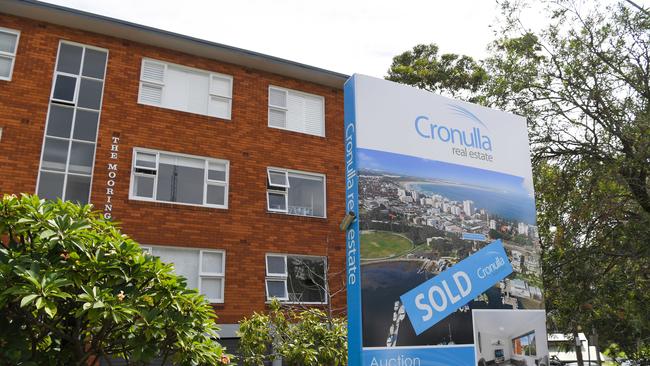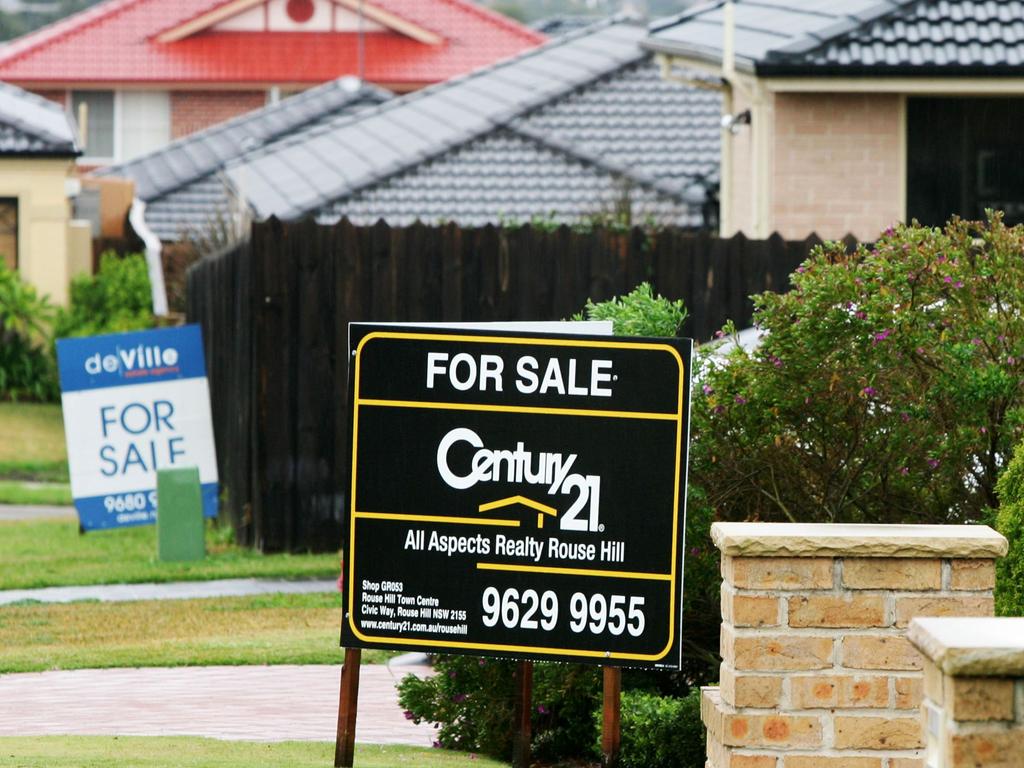CoreLogic house price data shows coronavirus slowdown underway in March
The first monthly house price data to feel the impact of coronavirus restrictions has delivered the lowest growth for almost a year.

Price growth momentum in the housing market has predictably been stunted by the coronavirus outbreak, with March reporting the lowest monthly rise in almost a year.
The second half of the month saw the trend of strong growth that began in July start to weaken as consumer confidence slumped and social distancing policies, including a ban on public auctions and open homes, came into effect to slow the spread of COVID-19.
House prices were up 0.7 per cent nationally in March, with all capital cities bar Hobart reporting gains, according property researcher CoreLogic’s monthly house price data.
Sydney reported the most significant price growth, up 1.1 per cent last month to see median prices for houses reach $1.02m. One of the weaker cities in March was Melbourne, up 0.4 per cent.
While property has so far remained immune from the direct economic fallout of the COVID-19 pandemic, flow on effects from the record fall of the ASX last month and the sharp rise in unemployment have dented consumer sentiment.
CoreLogic’s head of research, Tim Lawless, said house prices would begin to fall as a result of the crisis, but the strong foundations of the housing market, government stimulus and leniency from the banks towards homeowners would help brace against the coming period of disruption.
“Considering the temporary nature of this crisis, along with unprecedented levels of government stimulus, leniency from lenders for distressed borrowers and record low interest rates, housing values are likely to more be insulated than sales activity,” Mr Lawless said.
“The extent of any fall in housing values is impossible to fathom without first understanding the length of time this health and economic crisis persists. Arguably, the longer it takes to contain the virus and bring economic operations back to normal, the higher the downside risk to housing values.”
Darwin recorded the largest monthly gain of 2 per cent for March, taking the city’s quarterly prices up by 0.6 per cent. In the other smaller markets, Brisbane and Canberra prices were each up 0.6 per cent through March, while Perth (up 0.5 per cent), and Adelaide (up 0.3 per cent) each reported modest gains. Hobart – which has been at the peak of its market cycle for over a year – dropped 0.2 per cent.
The economic impact of the coronavirus outbreak was felt in the property sector through the latter half of March, with the true effects of the fallout to be felt in the coming months. Market and job uncertainty will likely impact on sales figures and the number of new homes being listed to fall as nervous buyers and vendors hold out.
The strong market upturn to this point had largely been driven by premium property sales, with prices in Sydney and Melbourne up 3.9 per cent and 2.9 per cent respectively over the quarter. But Mr Lawless warned past trends are not indicative of what likely to come over the coming months through these unprecedented times, stating that the coronavirus impacts are likely to be broadbased.
“A large proportion of job losses have been in lower paid sectors, such as hospitality, travel or tourism. However, equity values have also been hard hit, which could contribute to weaker demand across the higher value segments of the market,” he said.
Government imposed restrictions on selling operations will also place pressure on sales activity. Last weekend, the market was tested by its first Saturday of digital-only auctions. It had looked to be the busiest week of the year to date, with 3,203 homes initially scheduled to be sold under the hammer, but the sudden government ruling last Tuesday to ban public auctions and open homes saw nervous vendors accepting a large number of offers prior to the planned date, while 40 per cent of properties were withdrawn from the market prior.
Sydney achieved a preliminary clearance rate of 47.3 per cent from 1,263 properties, falling behind Melbourne which sold 58.6 per cent of the 1,517 homes on offer. While the success rate was slightly down on last week, preliminary figures from CoreLogic showed.
“Restrictions on open homes and on-site auctions will compound the slowdown in buyer activity, as would any future policy announcements related to peripheral services such as building and pest inspections, conveyancing and furniture removals,” Mr Lawless said.
Prior to the coronavirus pandemic, the Australian property market was facing a widespread upswing in prices. Five of Australia’s capital cities – Melbourne, Brisbane, Adelaide, Hobart and Canberra – had reached new price highs. Perth also hit the bottom of its six-year-long downturn and had achieved several months of modest yet sustained growth, while declines in Darwin were slowing in pace.







To join the conversation, please log in. Don't have an account? Register
Join the conversation, you are commenting as Logout